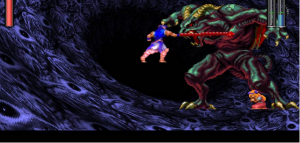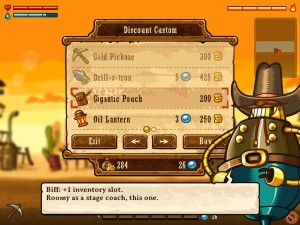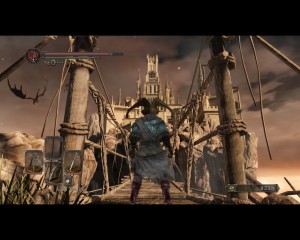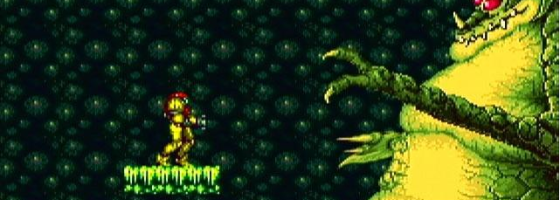If you’ve been following the Game Industry since the last decade, you’ve probably heard the term “Metroidvania” used once or twice to describe certain games. But what’s interesting is that Metroidvania is not a game genre but a specific set of game mechanics around progression and game design and has been a part of some of my favorite games.
Chocolate and Peanut Butter:
Metroidvania as the term implies is the combination of two popular game series: Metroid and Castlevania. The term first appeared in 1997 when Castlevania Symphony of the Night was released.
During the mid 90s, there was a rush to evolve series with the new capabilities of modern consoles. This is when we saw a lot of games make the move to 3D such as Mario, Sonic and everybody’s favorite: Bubsy the Cat. But the team behind Castlevania did something different and instead of changing the dimension, they altered the gameplay.
Traditional Castlevania games up until that point were pure action titles built around going through linear levels fighting bosses and of course Dracula. The only Castlevania before then that went with a more open ended design was Castlevania 2: Simon’s Quest which took Castlevania and combined it with exploring a world similar to Zelda.
Simon’s Quest was looked down at the time as the black sheep of the series due to its confusing design, but the idea of moving away from a series of level was inspiration used. The Metroid half of the Metroidvania comes from the design of the Metroid series of course, specifically Super Metroid. This is where the sense of progression came in as players would see a noticeable difference between the beginning, middle and end of the game with how they controlled Samus.

Symphony of the Night was a benchmark moment for the Castlevania series and changed all subsequent titles.
At the start you had a basic weapon and could run and jump with nothing else. But by the end of the game you had infinite jumping, multiple beams, different suits and more. With Super Metroid considered one of the best games ever made, having it as a component to your redesign was a smart choice.
Now that we know the two halves of the design, we can now define it and take a closer look:
Metroidvania: The game design of using new mechanics and systems as a form of gating progression
If you noticed, I didn’t use the term “genre” in that definition as Metroidvania is not a genre but a specific set of mechanics that can be seen in multiple game genres.
Building a Better Hero:
Metroidvania mechanics have become very popular as a means of providing progression in a variety of genres and it works based on two functions.
First is that the game starts the player off very weak with very little in terms of weapons or available abilities. A popular tactic is to strip the player of their abilities after a few minutes of play due to some plot device. By playing through the game and beating bosses or finding specific items, the player recovers and/or unlocks new abilities that get folded into their routine.
But these aren’t simply weapon upgrades but actual new mechanics such as being able to double jump, dodge around enemies, flight and more. As I mentioned further up, playing a Metroid game you can see and experience the difference between the early, mid and late game in terms of available mechanics and abilities.

Steamworld just barely skirts the line below Metroidvania as you do unlock new mechanics, but the world never changes or truly opens up because of it.
The other side of Metroidvania mechanics is having a pseudo open world design. There are “levels” in the sense that different areas have self contained enemies, obstacles, traps and bosses.
And while each area is technically open from the start, the player cannot access them all due to limited abilities. Maybe the path to that area is only accessible by double jumping a ledge, or you need a fire suit to walk through flames blocking this path.
The designers tease the player with new paths that can only be accessed later to give them a reason to come back and to show off that they are now better than they were before. The use of secret paths and hidden areas locked behind new mechanics both serve to reward players who explore and to give areas more flavor with sections off the beaten path.
An important distinction about Metroidvania mechanics is that progression has to be tied to mechanics, not arbitrary conditions for this to work. Games like Mario Galaxy or Demon’s Souls are not examples of Metroidvania as progression has nothing to do with unlocking new mechanics but completing specific tasks.
Most Metroidvania styled games take the form of 2D action adventure titles because the 2D landscape makes it easier to develop level design and progression mechanics. But as long as you are introducing new mechanics, then it doesn’t matter what genre your game is. Case in point, the Metroid Prime series took Metroid and made it a first person shooter but still kept the progression of finding new upgrades and was one of the best GameCube series.
So far we’ve talked about what is Metroidvania and some examples of it, but we haven’t yet tried to distinguish good and bad uses of it. Making a good game that uses Metroidvania game design goes back to the two main points and has to do with progression and level design.
Opening the World up:
First is that playing the game needs to be fundamentally different throughout the game as the main character finds new abilities. Just giving them a new attack or finding simple keys to unlock new areas doesn’t work. With the 3D Zelda games, while the player does unlock new tools as the game goes on, playing the game doesn’t change and is therefore not Metroidvania designed.
With level design, while the world is technically not open due to limiting access based on mechanics, the player still needs to feel like there is some choice in their path. If the path through the game is just going from point A to B to C and so on, then you just have a linear game disguised as an open world. There should always be at least two or three different areas that the player can explore at any given time past the opening.

Despite being open world, there are no new mechanics that unlock and change how you play over time, meaning Dark Souls 2 is not metroidvania.
While you can have an optimal path through the game, the player should be able to carve their own way through and be rewarded with hidden paths, areas and so on.
Being forced to backtrack through games is considered to be poor design, but leaving “breadcrumbs” of areas that the player can return to is a great motivation. However, there needs to be a good reason to return to these areas and not just finding an extra health item or additional currency.
With Castlevania Symphony of the Night, hidden paths gave way to new areas, health increase potions, items and even unlocking a second harder variant of the castle to find the true ending. And this was on top of the amount of variety of areas, enemies and bosses in the game already.
One element from Symphony of the Night that is optional in Metroidvania styled games is the inclusion of RPG systems like leveling up or equipping gear found in the game. This has sort of become the MO of Castlevania games as the player can level up their character and unlock new weapons which don’t add new mechanics, but makes them better at fighting.
These RPG systems add another dimension to the mechanics but aren’t a prerequisite for Metroidvania style play. The most important elements are new mechanics that change how the game is played and level design varied and open enough to warrant exploration.
Metroidvania styled games are still one of my favorite to play and I’ve pretty much played every 2D Castlevania since the switch with Symphony of the Night. And while it may sound like an easy win to design your game in a Metroidvania style, there is a lot of work that goes into making full use of these mechanics.

Aquaria and Cave Story were examples of Metroidvania created without the backing of a major studio and were impressive titles.
It’s one of those examples of where even games that don’t fully use Metroidvania mechanics can still be a great game as the progression model of new abilities is a great motivator.
But the games that get it right like Super Metroid and Symphony of the Night have gone down as some of the best games ever made which is a title I’m sure a lot of designers would want for their game.


